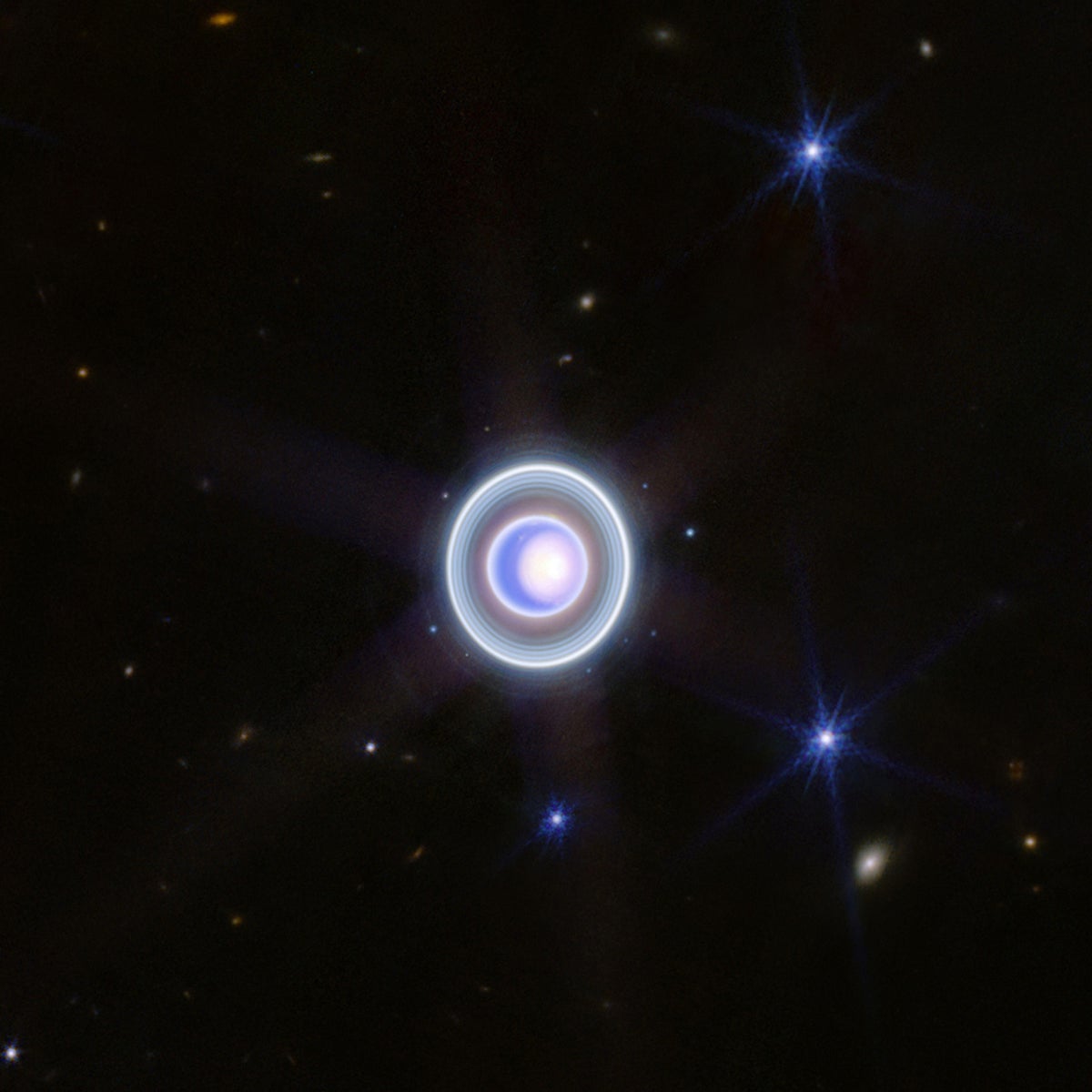NASA’s James Webb Space Telescope Discovers New Moon of Uranus
Using the powerful James Webb Space Telescope, scientists have spotted a moon nestled near Uranus’s rings that’s so small you could walk around it
An image of Uranus taken by NASA’s James Webb Space Telescope’s NIRCam (Near-Infrared Camera) vividly shows the planet and its rings, as well as many of its moons. JWST images have now revealed a 29th moon orbiting the planet that is not visible here.
Join Our Community of Science Lovers!
Scientists have discovered a new, elusive moon around Uranus, making it the 29th natural satellite known to orbit the ice giant.
The research team that made the discovery estimates that the moon, dubbed S/2025 U1 for now (at least, until the International Astronomical Union assigns an official name), is just 10 kilometers, or six miles, across, making it particularly small. “I could walk around this moon,” says Heidi Hammel, a planetary scientist and astrophysicist, who was not involved in the research.
In 1986 Voyager 2 flew within 81,800 km of Uranus’s cloud tops and gave humans their first close-up glimpse of this giant planet. The spacecraft returned with images of 11 new moons, on top of the five that were already known. Since Voyager, astronomers using the Hubble Space Telescope and ground-based telescopes have spotted other tiny moons—ones as little 12 to 16 km in diameter. But “this one was so small and so faint and so close to the bright ring system around Uranus that we missed it,” Hammel says.
If you’re enjoying this article, consider supporting our award-winning journalism by subscribing. By purchasing a subscription you are helping to ensure the future of impactful stories about the discoveries and ideas shaping our world today.
Astronomers using NASA’s James Webb Space Telescope discovered a new moon orbiting Uranus in images taken by Webb’s NIRCam (Near-Infrared Camera). This composite image shows the moon, designated S/2025 U1, as well as 13 of the 28 other known moons orbiting the planet.
A team led by the Southwest Research Institute detected the moon in images captured by the high-resolution Near-Infrared Camera on the James Webb Space Telescope (JWST) during a series of 10 40-minute-long exposures. “The cameras on [JWST] are very sensitive,” Hammel says. “They were designed to see the faintest galaxies in the universe,” as well as faint things that are close to very bright ones (such as the planet Uranus). NASA announced the moon’s discovery today via a blog post.
“One of the reasons this moon is interesting is that it’s very close to the main ring system,” Hammel says. Unlike Saturn’s rings, which are packed together, Uranus’s rings are more like Hula-Hoops, with lots of separation between each. The rings cluster between a main inner system and a faint outer one, Hammel says, and researchers speculate that the rings are sculpted by the planet’s little orbiting moons.
There are still many questions about the new minuscule moon for astronomers to explore: How does it compare with other moons? What is its color and composition? JWST might help answer a few of these questions. But regardless of what comes next, the discovery shows “how we can extend the horizons of our knowledge, even in our own solar system, using an advanced telescope like JWST,” Hammel says. “And it helps us get a better understanding of what drives the phenomena in our solar system—like “‘What is crafting that ring system around the planet Uranus?’”
Source: www.scientificamerican.com
